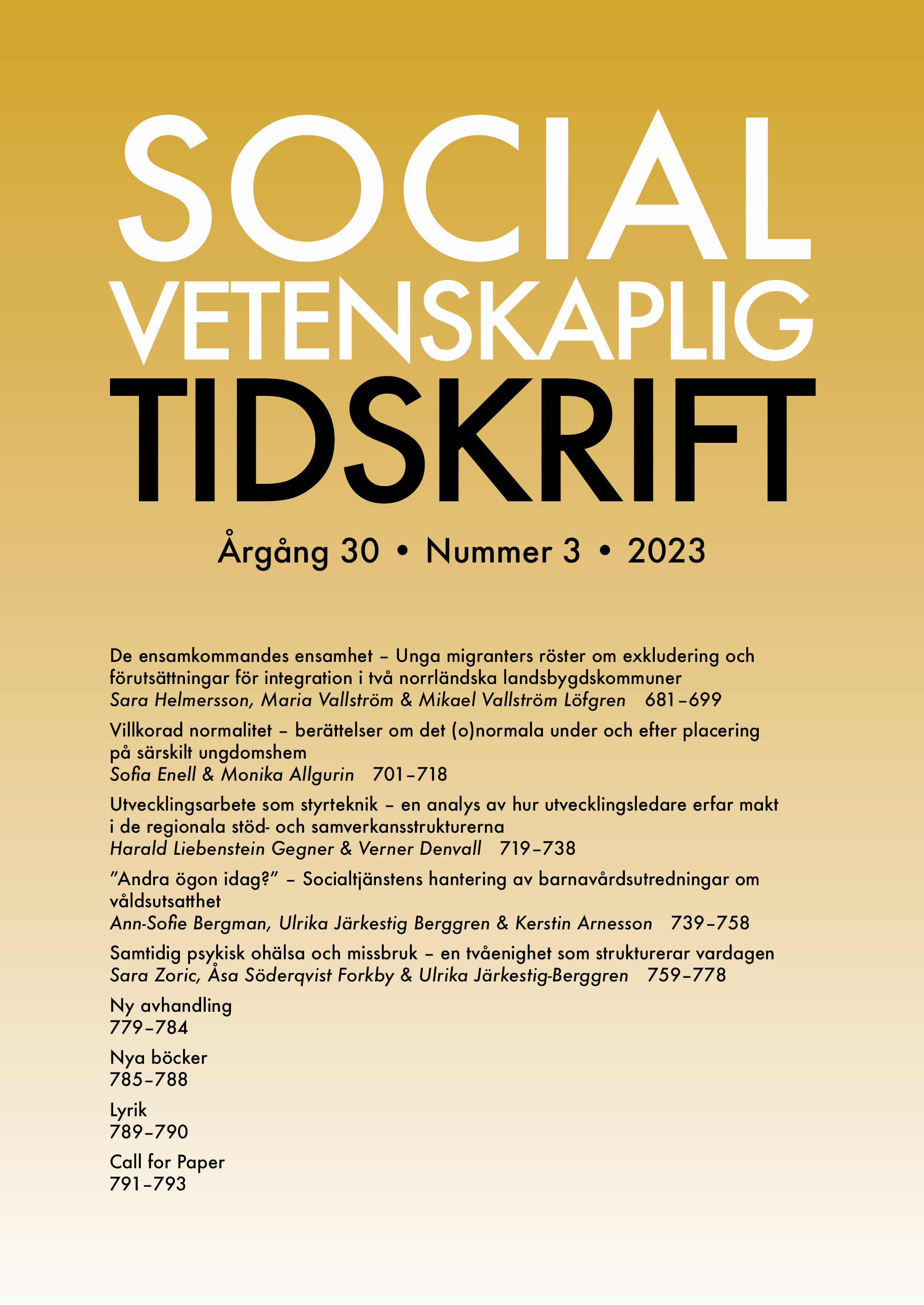De ensamkommandes ensamhet
– Unga migranters röster om exkludering och förutsättningar för integration i två norrländska landsbygdskommuner
DOI:
https://doi.org/10.3384/SVT.2023.30.3.4041Nyckelord:
unaccompanied minors,, loneliness, rural areas, affect, reflexivityAbstract
The loneliness of unaccompanied minors - Young migrants’ voices about exclusion and conditions for integration in two northern rural municipalities in Sweden
The purpose of this article is to deepen our understanding of the integration and exclusion of unaccompanied minors by using a phenomenological, affective framework on their experiences and feelings. The article is based on qualitative interviews with 36 young people who came to two northern rural municipalities in Sweden without guardians in 2015. The interview situation raised questions about our research position, which is reflected upon in an autobiographical note. The study shows that various forms of loneliness and feelings of exclusion are a consistent theme in the young people’s life stories. The loneliness often appears as situational and connected to the migration experience and the initial reception in the recipient country. The interviews also contain voices of great loss, but also concern, in relation to the family of origin. Sometimes a distrust of the interview situation could be discerned, where the young people’s lives made a strong impression, and loneliness was embodied. The results open for questioning a medicalisation of social and existential needs, but also the problematic nature of a traditional researcher role in this context.
Downloads
Publicerad
Referera så här
Nummer
Sektion
Licens
Copyright (c) 2023 Sara Helmersson, Maria Vallström, Mikael Vallström

Det här verket är licensierat under en Creative Commons Erkännande 4.0 Internationell-licens.
Allt material i Socialvetenskaplig tidskrift publiceras sedan 2022 (Vol 28 Nr 2) med omedelbar öppen tillgång (open access), under Creative Commons-licensen CC BY 4.0. Upphovsrätten till innehållet tillhör respektive författare.
Allt innehåll i tidskriften är fritt tillgängligt utan kostnad och får fritt läsas, laddas ned, kopieras, delas, skrivas ut och länkas. När innehållet används måste författare, källa och licens anges. Författaren kan fritt göra sin publicerade text tillgänglig på institutionella och internetbaserade arkiv, exempelvis sitt lärosätes digitala arkiv eller andra tjänster för detta.
Inga publiceringsavgifter tas ut vid publicering i Socialvetenskaplig tidskrift.


